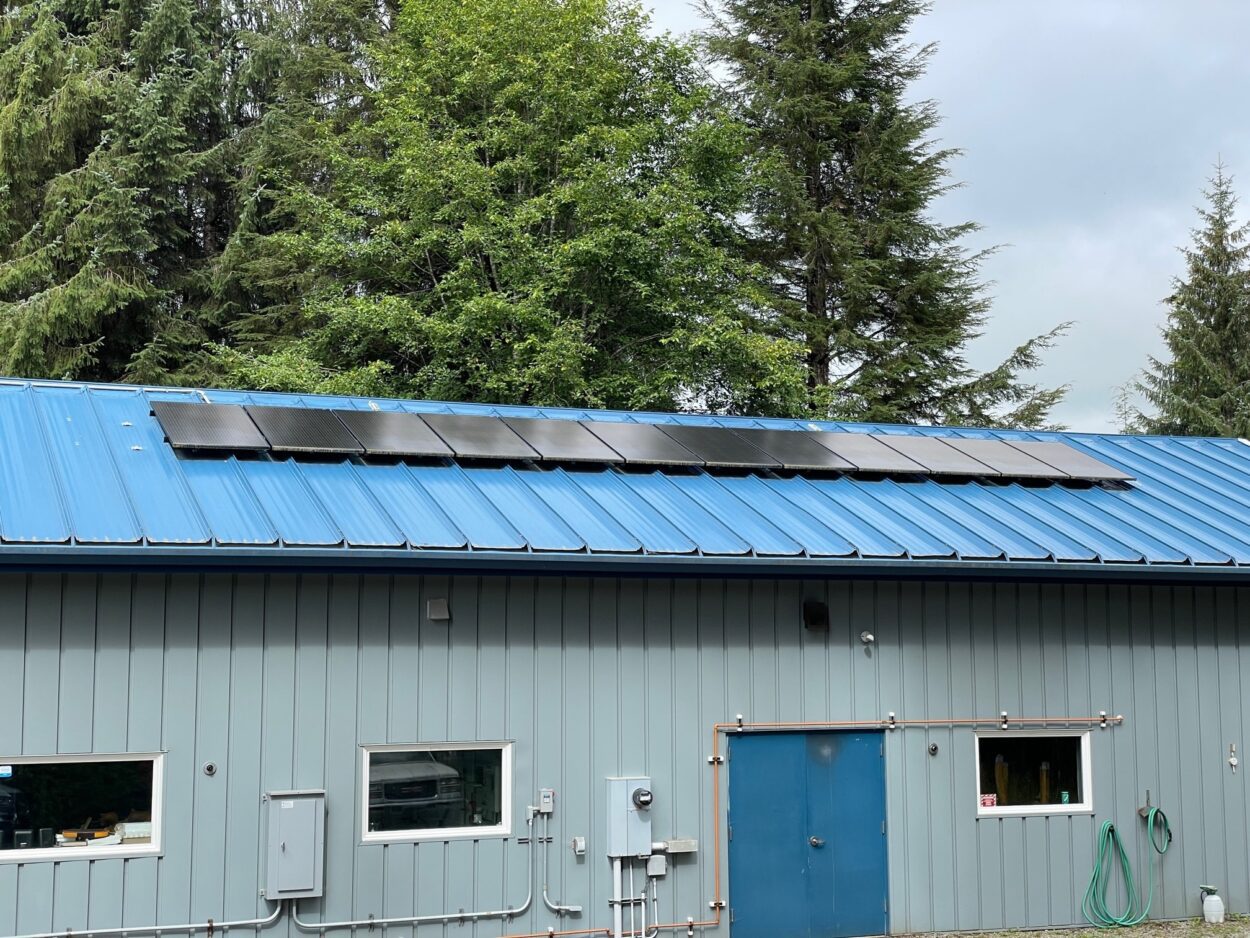
Klawock’s existing solar array. (Photo courtesy of Ryan Syvertson).
Officials from the Alaska Native Tribal Health Consortium are traveling to rural communities around the state to promote a service offered by an offshoot of its energy program — providing solar panel systems to help bring down costly electric bills.
Solar panels have been mounted on the roof of Klawock’s water treatment plant for two years. And, more could be coming.
Katya Karankevich works for the consortium’s energy program.
“Our primary mission is to lower water and sewer bills and energy bills for rural customers,” Karankevich said. “Primarily, we work with tribes and cities in rural Alaska to do projects, renewable energy projects, energy efficiency projects that fundamentally and ultimately reduce their bills.”
She was in Klawock on Thursday, working on a video she hopes will get the word out to rural areas.
“And then we can send that video to the 229 tribes in the state, a lot of which might not know that we have a little program and ANTHC will come and consult for free, help develop an energy project, and write for the grant and administer that funding, and go all the way through construction,” she explained.
What’s on top of Klawock’s water treatment plant is called an “array,” which is a collection of solar panels that work as one system to generate energy. Karankevich said that just the one small array has saved Klawock’s utility somewhere between $500 and $600 a year.
“If we put in a community sized system or utility scale system, and have somebody — like the tribe or the city — own that asset and sell power to the local utility, now the local utility can write off all of the cost of that power purchasing it from that other entity,” Karankevich said. “They can write it off and get the PCE reimbursement.”
PCE stands for Power Cost Equalization. It’s a state program that brings down the cost of electricity in eligible rural areas to rates seen in more urban areas.
Karankevich said more arrays could be in Klawock’s future after what she says was a successful meeting with the tribe.
“They have interest in installing arrays on all of the tribal buildings that they have access to here, and maybe on the roof of the dump, and maybe on the roof of the wastewater treatment plants,” she said.
She said she’s looking into whether Klawock’s power utility is interested in the option.
Raegan Miller is a Report for America corps member for KRBD. Your donation to match our RFA grant helps keep her writing stories like this one. Please consider making a tax-deductible contribution at KRBD.org/donate.





